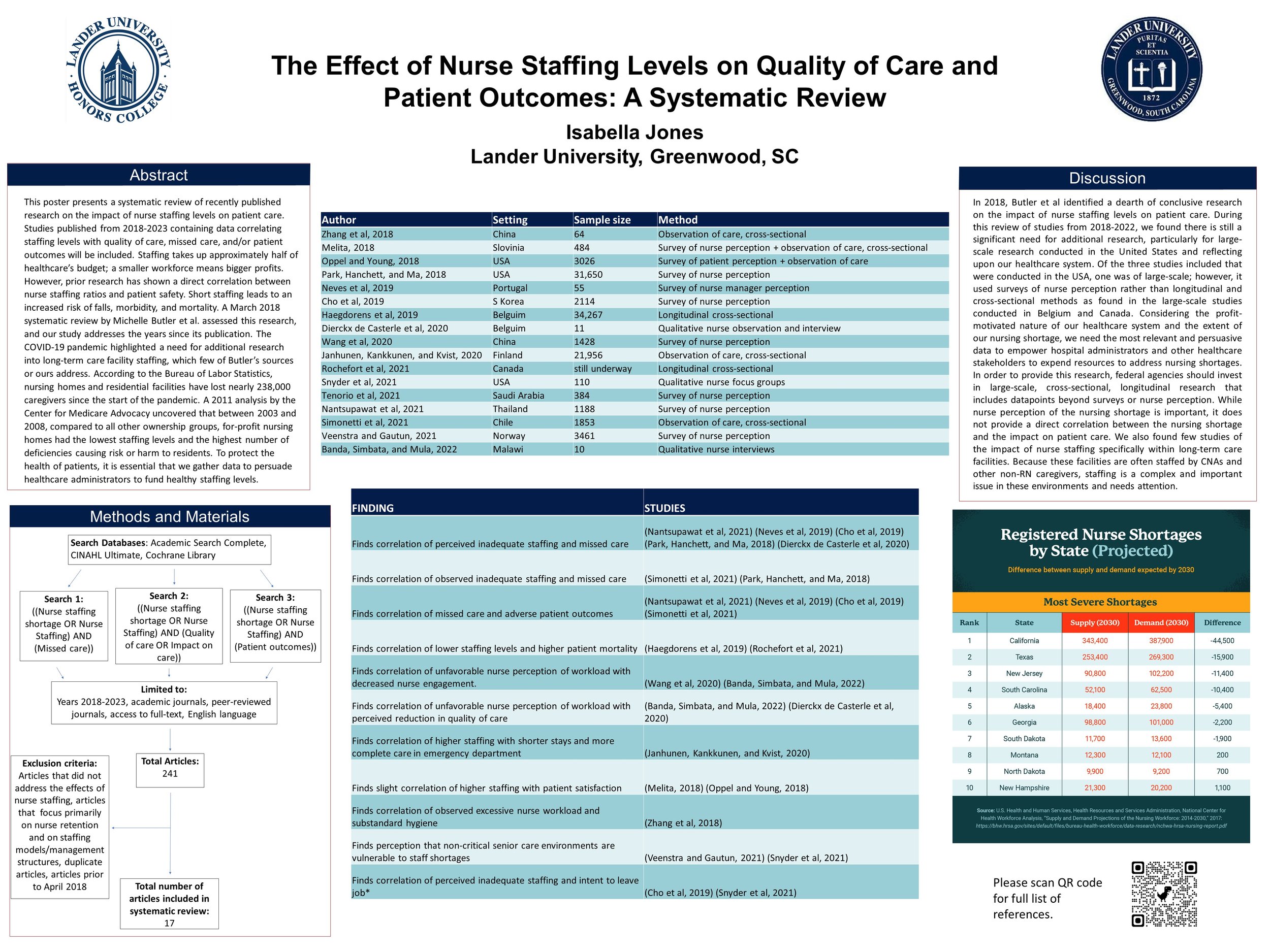Isabella Jones
Presented at the South Carolina Academy of Sciences Annual Meeting at MUSC, March 25, 2023
This poster presents a systematic review of recently published research on the impact of nurse staffing levels on patient care. Studies published from 2018-2023 containing data correlating staffing levels with quality of care, missed care, and/or patient outcomes will be included. Staffing takes up approximately half of healthcare’s budget; a smaller workforce means bigger profits. However, prior research has shown a direct correlation between nurse staffing ratios and patient safety. Short staffing leads to an increased risk of falls, morbidity, and mortality. A March 2018 systematic review by Michelle Butler et al. assessed this research, and our study addresses the years since its publication. The COVID-19 pandemic highlighted a need for additional research into long-term care facility staffing, which few of Butler’s sources or ours address. According to the Bureau of Labor Statistics, nursing homes and residential facilities have lost nearly 238,000 caregivers since the start of the pandemic. A 2011 analysis by the Center for Medicare Advocacy uncovered that between 2003 and 2008, compared to all other ownership groups, for-profit nursing homes had the lowest staffing levels and the highest number of deficiencies causing risk or harm to residents. To protect the health of patients, it is essential that we gather data to persuade healthcare administrators to fund healthy staffing levels.
